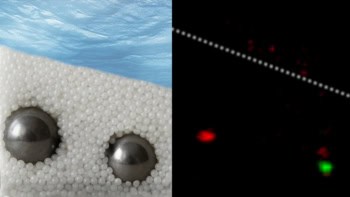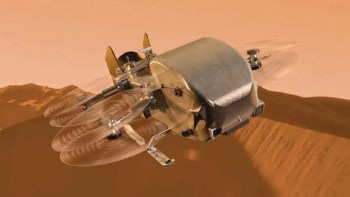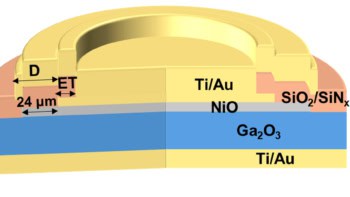US researchers have discovered that Saturn's moon Titan has low level clouds, a possible indication of methane rain. Previously scientists have believed that the satellite - with its atmosphere of nitrogen and methane - had exceedingly dry weather. Caitlin Griffith and colleagues used near-infrared spectroscopy to discover rapid changes the concentration of methane in Titan's atmosphere which is similar to the behaviour of rain cloud formation observed on the Earth (Nature 395 575).
Planetary physicists hope to use atmospheric data from Titan to provide clues to the behaviour of our own atmosphere. The difficulty with studying Earth’s atmosphere is that it is affected by extra variables such as the biosphere, geological activity and large quantities of water on the surface, which can make it difficult to study some of the underlying atmospheric processes. Titan on the other hand, is cooler, atmospherically dense, and believed to be relatively dry.
Griffith and colleagues knew from observations made by the Voyager spacecraft in 1980 that Titan’s atmosphere was quite dynamic. Many scientists claimed that Titan had a weather system based on methane, with methane clouds, rain and oceans. Other data suggested a much ‘drier’ planet because methane would not remain long in the lower atmosphere. But it has been hard to obtain details of the lower atmosphere because radiation is absorbed by the thick concentrations of methane and nitrogen gases on the satellite. However, near-infrared spectroscopy instruments fitted to the United Kingdom Infrared Telescope (UKIRT), Hawaii, were able to peer through some narrow ‘windows’ in the atmosphere that are transparent to infrared radiation.
On occasions the researchers could see bright ‘clumps’ in the methane concentrations at about 15 km up from Titan’s surface. These clumps covered 9 percent of the moon. Unlike the Earth, methane clouds on Titan are expected to be extremely brief events, which would explain their lack of detection in earlier observations. Further information will come to light in 2004 a European Space Agency probe called Huygens will be dropped into Titan’s atmosphere.



